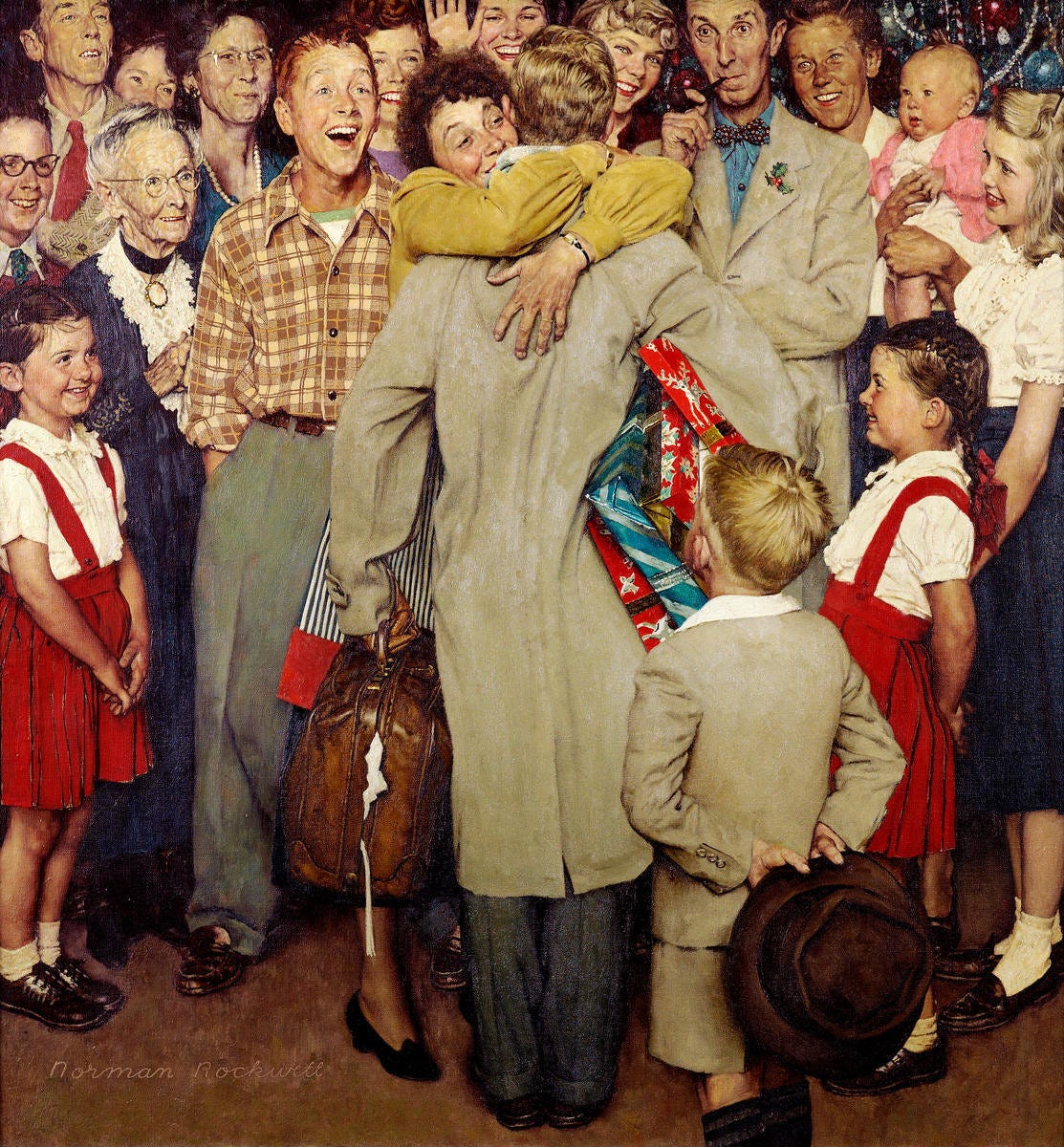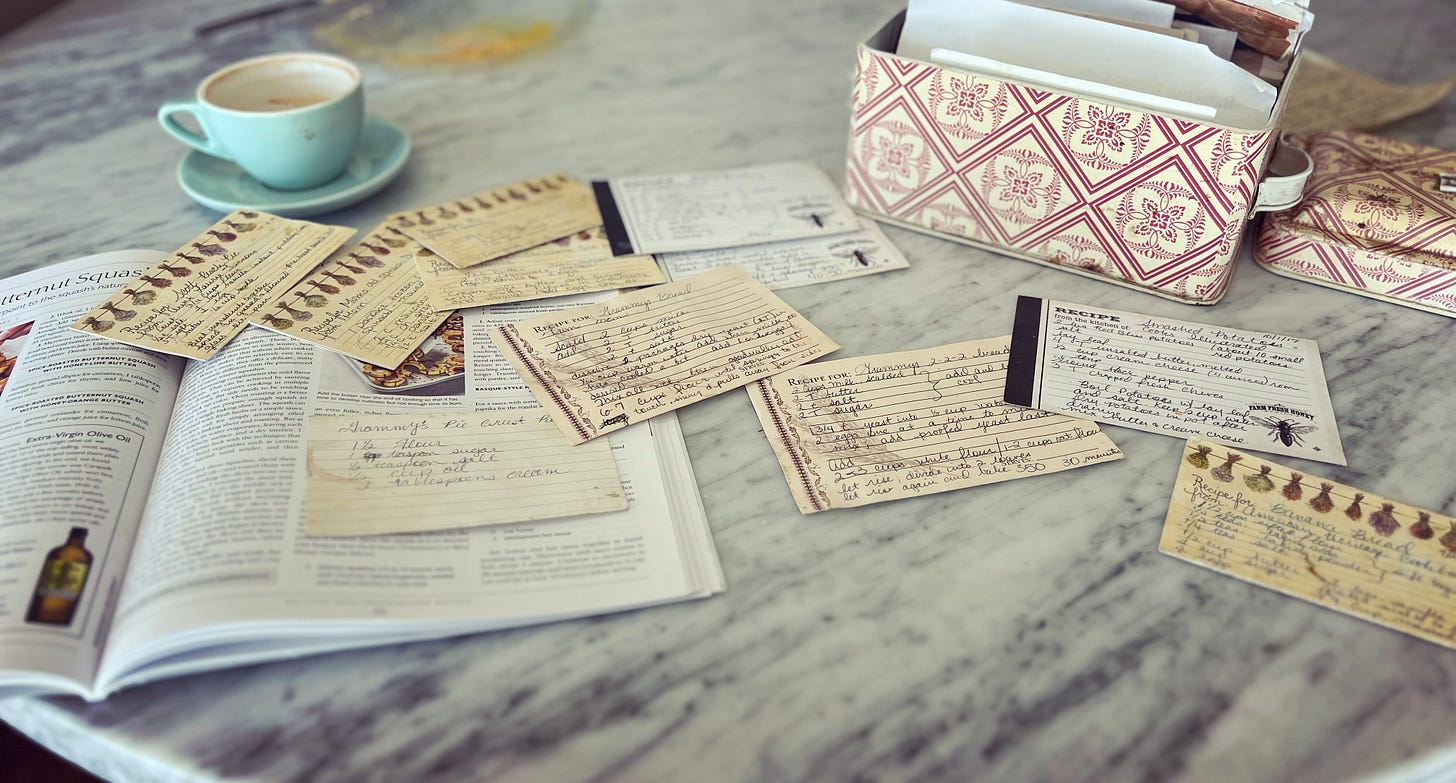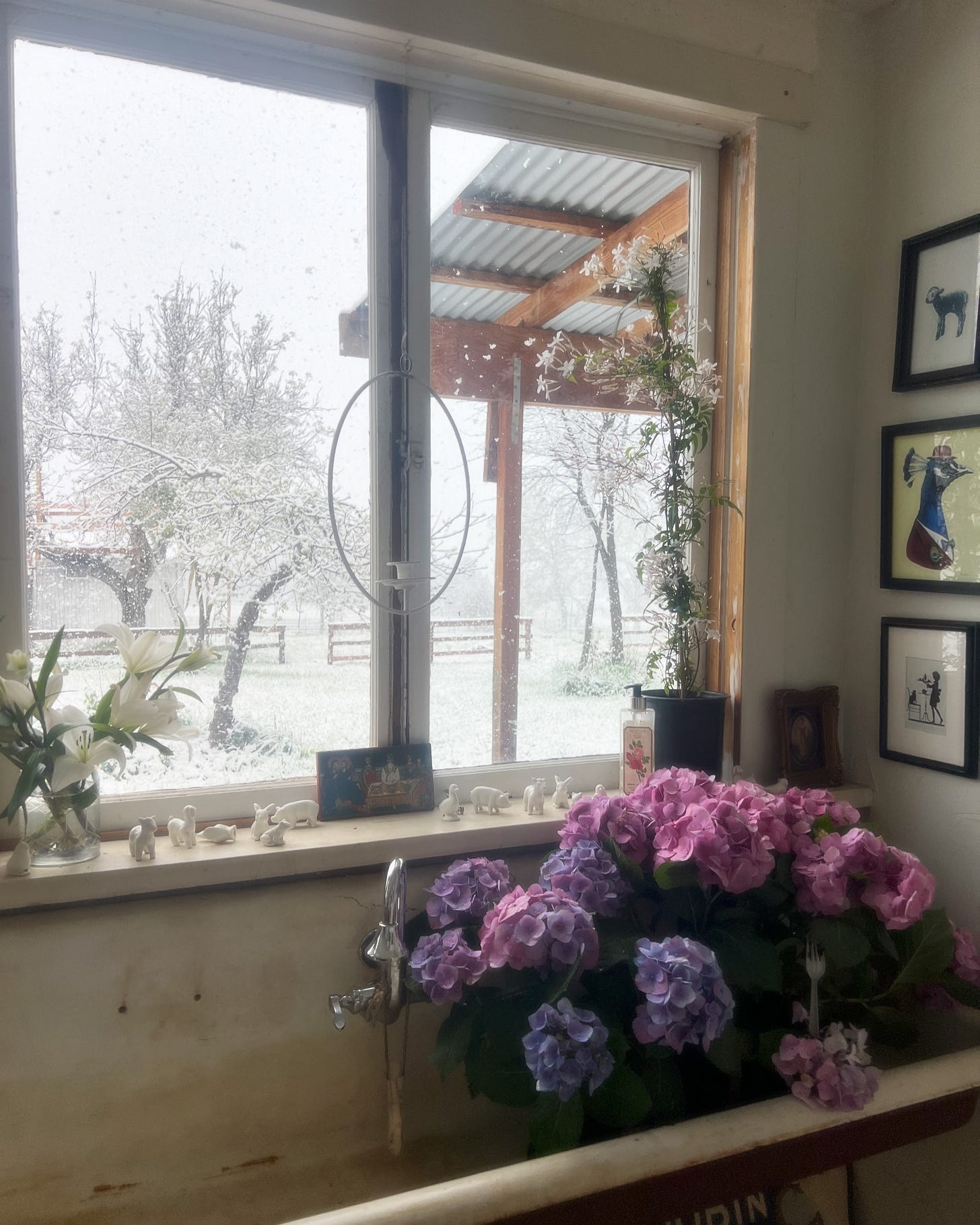Halloween marks the official start of the holiday season for moms. We resist it; we theorize that it is really American commercialism that forces Thanksgiving and Christmas to join with Halloween to oppress us for the better part of three months. But the seasoned matriarch understands this time of year to be The Mom Olympics, and she wisely leans into her role as the champion of champions.
The goal of the Matriarch is to build her clan and keep it together through all the stages of her children’s lives. The family culture—roughly, what the kids remember as “what we always used to do to celebrate this holiday or that feast” is the main vehicle by which the Matriarch keeps and perpetuates her clan.
When children, particularly sons, grow up and marry and move away, the main thing that brings them back home again into the bosom of the family is their desire to relive the magic of their childhood, particularly its creature comforts. The desire to eat our mother’s food or sit in her kitchen, or play football on a crisp Thanksgiving day with our uncles and cousins is stronger than almost any other cultural inclination. It is family culture; it is “the way we do things,” and the producer of the family culture is the matriarch.
But it is an unbelievable amount of work. A full-court press from October through January, every year. It is exhausting and somehow mothers are both expected and assumed to be the makers of this magic.
This post is the first in a series dedicated to relieving the surprise and dismay we feel when we realize that our people expect certain things to happen every year, in the same way or better, and they expect us to make it happen. This expectation, while initially overwhelming and sometimes annoying, is a recognition that the mother is the creator and keeper of the family culture. It is her mission, her creative process that will give the family its distinct culture. My goal is to help you see that your power in this area of family life is so complete and uncontested that instead of rejecting or fearing it, you might appreciate it; and use the early years of marriage and babies and toddlers to plan ahead, collect ideas, and look forward to your days of glory as a seasoned matriarch.
I would also love to hear from all the olympians, novice and seasoned, about their own customs and traditions, that we might create a lovely account of this uniquely female contribution to life in America. How did your mother do it? What things are you looking to keep, and what new ideas do you have for your family?
The Mom Olympics is where we make our memories. It is when we buy gifts and say thank you to teachers and community members who help us to raise our family. We throw parties and attend parties to give thanks together with our friends and family for another year of peace and prosperity. It is when we send out greeting cards and thank you cards—not because Miss Manners told us we must, but because these customs knit together our larger community and establish our family as a major player in the local social and financial economy. We do not buy gifts and send cards and throw parties to compete directly with other women in some zero sum game: we do these things because knitting people together and raising the social capital of our clan is our job. The purpose of The Mom Olympics is to lift our family and our local community up in joyful gratitude for everything we have.
No matter what we do on major holidays and vacations, no matter how much we determine to go easy and refuse to take part in the expectations of our culture, the fact remains that family culture is feasting. Feasting happens in the summer, too. But the height of the feast is in the fall and winter, when our harvest has been gathered, when we are tired from our long summer days of working to provide for our families, and we are ready to rest and reflect and enjoy all we have accomplished. As such, our holidays require good food, comfortable furnishings, and creative staging to satisfy our artistic ambitions.
This is why the Catholic Church puts such emphasis on feast days and holy days. Holy days, or holidays, are the currency and engine of our culture. In some sense, to be Catholic is to participate in cultural customs, year after year. Christianity is an intellectual faith; our Catechism and our apologetics are a key part in passing our faith to our children. But let’s not kid ourselves. The Mom Olympics is what the kids will remember. It is what they will wish to pass on to their own children.
Christianity is a faith in practice, and a culture of a particular people. It is not simply book learning. The creative genus required of Christian women involves setting a stage and fleshing out what this faith looks like when lived out. What outward signs can we create to signify the spiritual reality of what we are celebrating for our children? How can we enchant the very little and the very old; how do we reacquaint the cynical or the preoccupied family member with the delights of our faith, year after year?
We rejoice in the faith we have been given, in the seasons and in creation with our feasts. And we give witness to and spread that faith out to the larger community primarily through feasts and holy day customs.
The new mom and the young mom are not expected to compete as full participants in the Mom Olympics. It is an honor and a sprint reserved for the woman in her social prime. But all women look forward to producing grand holiday traditions and family customs of their own. This series will explore various customs and also tips and recommendations from seasoned moms to inspire you and help you to create your family’s culture.
Today, we begin with Halloween and the question of To Decor Or Not To Decor. Tomorrow and for the next few months, we will run our race “Citius, Altius, Fortius!”
We are going for the gold. But in so doing, we remember that family culture is not the product of one year of absurd spontaneous activity, but rather the gradual building, brick by brick, year by year, of customs and traditions of our own choosing. Just as matriarchs are ultimately the keepers of tradition, we also are the creators, and our best creations will reveal our unique and individual artistry.










Your comment about how young moms and new moms participate differently in creating/hosting holiday traditions/feasts is very accurate. I became a mother in March of 2010, and it was just last year that I realized I needed to get all of my recipes for each holiday organized into one single binder. This is now called the Thanksgiving Binder and it includes every recipe for every traditional family food we make every year. Initially I felt so lame for taking so long to come up with this idea, but the truth is I just hadn’t needed to yet. We had usually been hosted at other (older) matriarch’s homes for various holiday dinners (my mom, my MIL, my older sister-in-law, etc). But now, as my children are slowly becoming teenagers and I am entering this very intense (but wonderful) season as an increasingly skilled mother with many demands, I realize that I am in charge of all of this. The menus, the baking, the decorating, the music, the traditions: every little thing is orchestrated by me. What a gift!
Love this post. My mom carried what few traditions & customs she did seemingly out of obligation. I would love to be able to create cherished traditions for my family, but I’ve got two little ones, a tight budget, and not much of an example to look towards. So I look forward to this series.
I appreciate the acknowledgement of young moms— it helped me to take the pressure off myself and appreciate the fact that I’m in the information gathering stage right now. It’s certainly tons of trial and error. But you’ve painted such a beautiful picture for me to look towards in this journey, and make it much less daunting. Thank you for sharing 🙏🏻